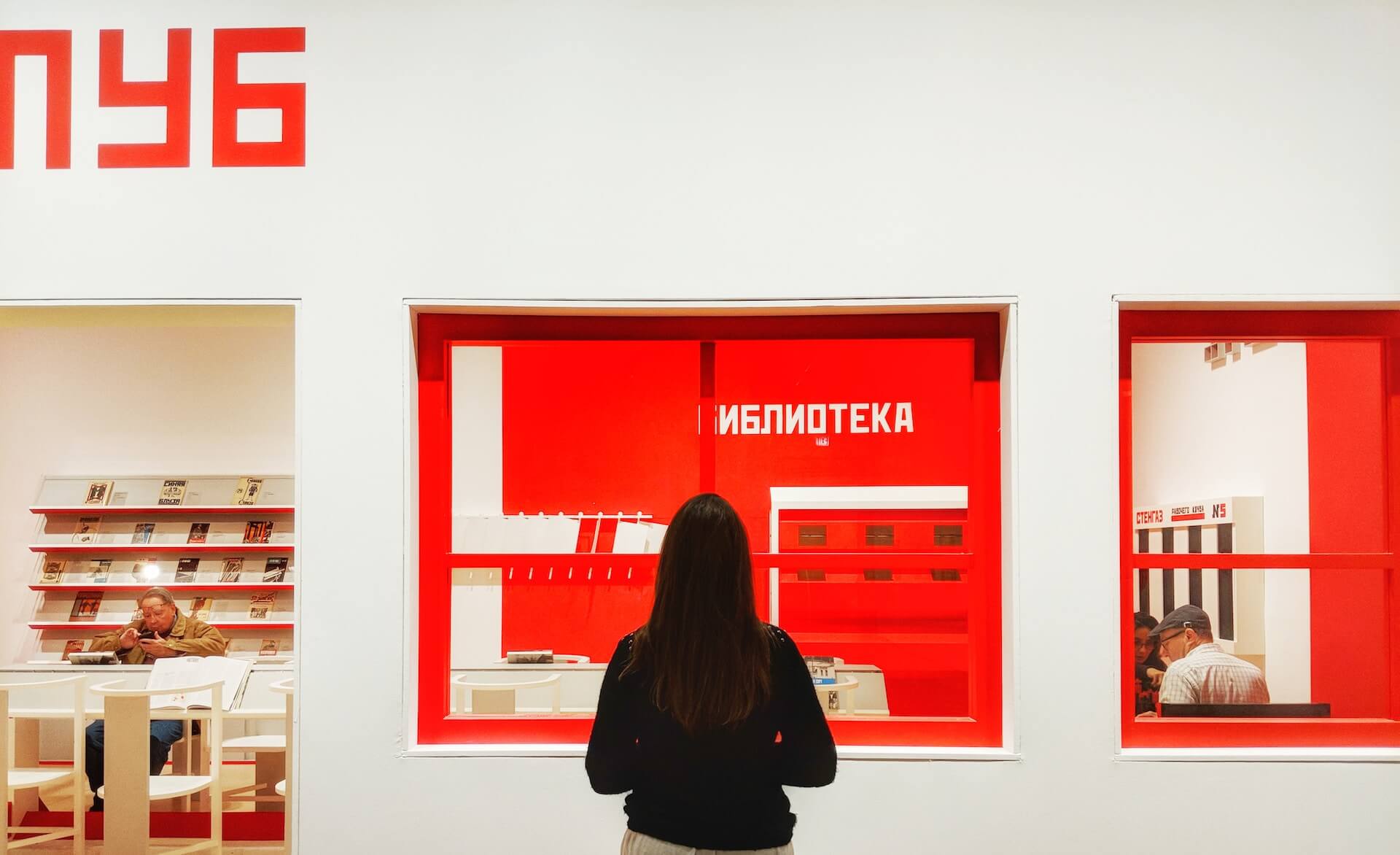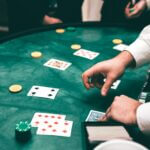Are you tired of staring at textbooks and grammar charts in an attempt to learn Russian? Do you find yourself struggling to remember vocabulary words or verb conjugations? It’s time to switch up your language learning routine and incorporate some creativity into the process.
By using art to improve your Russian skills, you can tap into your right brain and engage with the language on a deeper level.
Art has long been recognized as a powerful form of expression, but did you know it can also be used as a language-learning technique? Whether through painting, drawing, photography, or music, incorporating creative activities into your study sessions can help reinforce concepts and improve retention.
Not only does this approach make learning more enjoyable, but it also allows for greater personalization and flexibility in how you engage with the language. So why not give it a try? Let’s explore how getting creative can enhance your journey toward fluency in Russian.
Table of Contents
Exploring The Benefits Of Art-Based Language Learning
Art-based language learning has been gaining popularity among language learners worldwide. It is a unique and creative way of immersing oneself in the target language while exploring different art forms, such as music, photography, painting, and more.
The benefits of art-based language learning are endless, ranging from improving one’s vocabulary to enhancing cultural understanding. While there are certainly some drawbacks to this method, like limited access to resources or difficulty finding appropriate materials for different proficiency levels, the advantages cannot be ignored.
For instance, incorporating various elements of art into your study sessions can make it easier to remember words and phrases by attaching them to visual cues. Moreover, using art can help you overcome any fears or anxiety associated with speaking in public or making mistakes when communicating in a foreign language.
There are numerous ways to integrate art into different levels of language proficiency — beginners can start with simple songs or paintings that depict basic concepts. In contrast, advanced learners can explore complex literature and films that offer deeper insights into the culture behind the target language.
Incorporating Drawing And Painting Into Your Study Sessions
Now that we’ve explored incorporating music and poetry into our language learning let’s dive into another creative avenue: drawing and painting. While it may seem like an unlikely addition to your study sessions, art can be a powerful tool for improving your Russian skills.
Firstly, creating flashcards with illustrations can aid in memorizing vocabulary words. Not only does the act of physically drawing or painting the image help with retention, but having a visual aid alongside the word can reinforce its meaning in your mind.
Additionally, illustrating idioms (such as ‘брать/взять себя в руки,’ which means ‘to pull yourself together’) can help you understand their figurative meanings more quickly. By visually representing the phrase, you can better connect its literal translation with its intended message.
Furthermore, using art to practice writing in Russian can also be beneficial. Try journaling about your day-to-day experiences solely through drawings or paintings. This exercise will improve your artistic abilities and strengthen your ability to express yourself in Russian without relying on direct translations from English.
As we’ve seen, incorporating art into your Russian studies can provide numerous benefits beyond just aesthetic pleasure. So why not break out those colored pencils and give it a try?
But if you’re not one for drawing or painting, don’t worry — there are plenty of ways to enhance your vocabulary with music and poetry!
Enhancing Your Vocabulary With Music And Poetry
Are you tired of memorizing long lists of vocabulary words? Do you want to spice up your language-learning journey? If the answer is yes, consider using music and poetry to enhance your Russian skills. Not only will it make learning more enjoyable, but it will also give you a deeper understanding of the culture.
Analyzing lyrics can be a fun and effective way to learn new vocabulary. Songs often contain phrases commonly used in everyday conversations, so listening to music can help you become familiar with colloquial expressions. Additionally, songs usually have repetitive choruses, making them easier to remember.
Translating metaphors in song lyrics is another great exercise for expanding your vocabulary. Metaphors are figures of speech used to describe something by comparing it to something else. They add depth and richness to the language, allowing you to express yourself more eloquently. By analyzing the meaning behind metaphors in Russian songs or poems, you’ll not only gain insight into the language itself but also deepen your appreciation for its artistic expression.
As we delve further into our creative exploration of enhancing Russian skills, let’s now take a moment to focus on photography as an essential tool for building cultural competence.
Using Photography To Build Cultural Competence
As we learned in the previous section, music, and poetry can be powerful tools for enhancing our vocabulary.
Another way to improve language skills is through photography. Photo journals allow us to capture moments of cultural immersion through visual storytelling. We can learn new words and phrases by taking pictures of everyday life while gaining a deeper understanding of the culture.
Photography provides an opportunity to make language learning fun and personalized with creativity. Instead of memorizing grammar rules and word lists, we can visually connect these concepts to real-life situations.
For example, if you are learning Russian food vocabulary, take photos of dishes at local restaurants or snapshots of ingredients at the grocery store. These images will help you remember the names of foods and their cultural significance.
With this approach, language learning becomes more enjoyable and meaningful as we create personal connections between words and experiences.
Making Language Learning Fun And Personalized With Creativity
Language learning can often feel like a chore, but it doesn’t have to be that way. Incorporating creativity into your language practice can make the process more enjoyable and personalized.
Collaborative projects are one great way to do this. Working with others on a project, such as creating a comic strip in Russian or filming a short video entirely in the language, can improve your skills and create a sense of community and motivation.
Another creative activity that has gained popularity recently is mindful coloring. This involves coloring intricate designs while focusing on the present moment and letting go of distractions. Coloring pages specifically designed for language learners, featuring vocabulary words or phrases in Russian alongside illustrations, provide an opportunity to practice reading comprehension while enjoying a relaxing activity at the same time.
Incorporating these activities into your language learning routine can help you stay motivated and engaged while improving your skills. Through collaborative projects and mindful coloring, language learning becomes less about memorizing vocabulary lists and grammar rules and more about experiencing the joy of creating something new while developing fluency in another language.
So why not give them a try? You never know where they might take you!
Frequently Asked Questions
What Are Some Specific Art Materials Or Mediums That Are Particularly Effective For Language Learning?
When it comes to using art to learn Russian, there are a variety of materials and techniques that can prove particularly effective.
For example, incorporating drawing or painting into your language learning routine can help you associate visual elements with new vocabulary words and grammatical structures.
Similarly, creating collages or other mixed media pieces in Russian can encourage you to experiment creatively with sentence structure and syntax.
The benefits of incorporating art into language learning for advanced learners are numerous — not only does it make the process more enjoyable, but it also encourages students to think outside the box and approach language acquisition from a fresh perspective.
Ultimately, whether you’re an experienced artist looking to improve your Russian skills or simply someone looking for a fun new way to practice speaking and writing in another language, exploring different art mediums is an excellent place to start!
Can Art-Based Language Learning Be Effective For All Levels Of Proficiency, Or Is It Better Suited For Beginners?
Art vs. grammar: which is better for beginners?
This age-old debate continues to be a topic of interest among language learners, especially those just starting their journey.
While some argue that mastering the rules and structures of a language is crucial for developing fluency, others believe that immersing oneself in the target culture through art can speed up the learning process.
So, can art-based language learning be effective for all levels of proficiency?
The answer is yes! Advanced learners may benefit more from this approach as it allows them to explore complex themes and express themselves creatively in the target language.
Art as a language immersion experience helps break down barriers between cultures. He fosters more profound connections with native speakers – allowing learners to practice what they’ve learned beyond the textbook or classroom setting.
How Can Incorporate Art Into Language Learning Help With Pronunciation And Intonation?
Incorporating visual art and music into language learning can be a game-changer when it comes to mastering pronunciation and intonation.
By immersing yourself in another language’s sounds, rhythms, and melodies through creative mediums, your brain becomes more attuned to picking up subtle nuances that might otherwise go unnoticed.
When you combine this with active listening exercises and repetition drills, you’ll find that your ability to communicate authentically skyrockets.
So if you’re looking for a fun and effective way to take your Russian skills to the next level, why not try incorporating some artistic elements into your study routine?
You might surprise yourself with how quickly you progress!
Are There Any Particular Artists Or Art Movements In Russian Culture That Are Especially Helpful To Study For Language Learners?
Famous Russian painters and regional art styles can be a treasure trove for language learners looking to improve their understanding of the Russian language.
It’s hard to overstate just how helpful studying these artists and movements can be in getting a deeper understanding of the nuances of the language.
From the bold, colorful strokes of Wassily Kandinsky to the intricate, detailed works of Ivan Shishkin, there is no shortage of inspiration when it comes to exploring Russian culture through its art.
Dive into some lesser-known regional art styles like Palekh or Khokhloma, and you’ll quickly find yourself not only improving your language skills but also discovering a whole new world full of beauty and meaning.
Can Art-Based Language Learning Be Used As A Supplement To Traditional Language Learning Methods, Or Is It More Effective As A Standalone Approach?
Using art as a standalone learning method can be an incredibly effective way to improve your language skills. It allows you to engage with the materials in a new and creative way, making it easier for your brain to retain information.
However, that doesn’t mean that integrating art into traditional language classes isn’t also beneficial! Combining the two approaches can create a powerful visual and linguistic learning combination.
Learners can tap into both sides of their brains by using art alongside more structured exercises like grammar drills or vocabulary quizzes for maximum retention and mastery.
Whether studying Russian specifically or looking for ways to make language learning more engaging, incorporating artistic elements is worth exploring!
Conclusion
In conclusion, incorporating art into language learning can be a highly effective approach to improving one’s Russian skills. Whether you are a beginner or an advanced learner, specific art materials and mediums can help you absorb the language more intuitively and engagingly.
To use an allegory, think of language as a garden that needs tending. Traditional methods may provide the seeds and tools necessary for growth, but it is through creative exploration – like planting colorful flowers or designing unique pathways – that the garden truly flourishes.
Art-based language learning allows us to cultivate our linguistic abilities with imagination and joy, making the process informative and enjoyable. By studying artists and movements in Russian culture, using visual aids to practice pronunciation and intonation, and even creating your artwork inspired by the language, you can deepen your understanding of this complex yet beautiful tongue.
So why not get creative with your Russian studies? You might find yourself blooming in ways you never thought possible!




